As a photo editor, I often need split screen photo apps to compare the original image with different edited versions. This is especially important for big projects where consistency matters, like keeping skin tones even or making sure colors match across multiple photos.
Constantly switching between tabs or opening separate windows became frustrating. So, my team at FixThePhoto team and I began searching for the best split screen photo app to speed up my work.
These apps allow you to compare before-and-after shots, different retouching stages, or reference images alongside your edits. Some tools also include synchronized zoom, movable dividers, and annotation options, which are great for collaborating with clients or a team. I tested 30+ of split screen photo apps and only kept the ones that truly improved my workflow without slowing me down.
Many split screen photo apps for Android, Mac, or PC now incorporate AI tools, offering features like automatic layout recommendations and smart image placement. However, I’ve found that AI often fails to grasp the visual context the way I want, particularly for professional projects where precision matters.
For instance, when creating a comparison collage to highlight different retouching styles, I need complete manual control: precise alignment, tonal consistency, and custom labeling. AI, however, usually just places images in a generic template without any meaningful logic.
This doesn’t mean automation has no value. For quick projects like throwing together an Instagram Story from casual snapshots, AI-powered layout suggestions can be a real time-saver. But when I need pixel-perfect precision, I always return to manual mode to adjust every detail exactly how I want it.
I also always test how customizable the app is – can I change the dimensions, fine-tune the spacing between images, include text labels, or modify the collage even after saving? These might seem like small features, but they're crucial when you're creating something more serious than just a simple social media post.
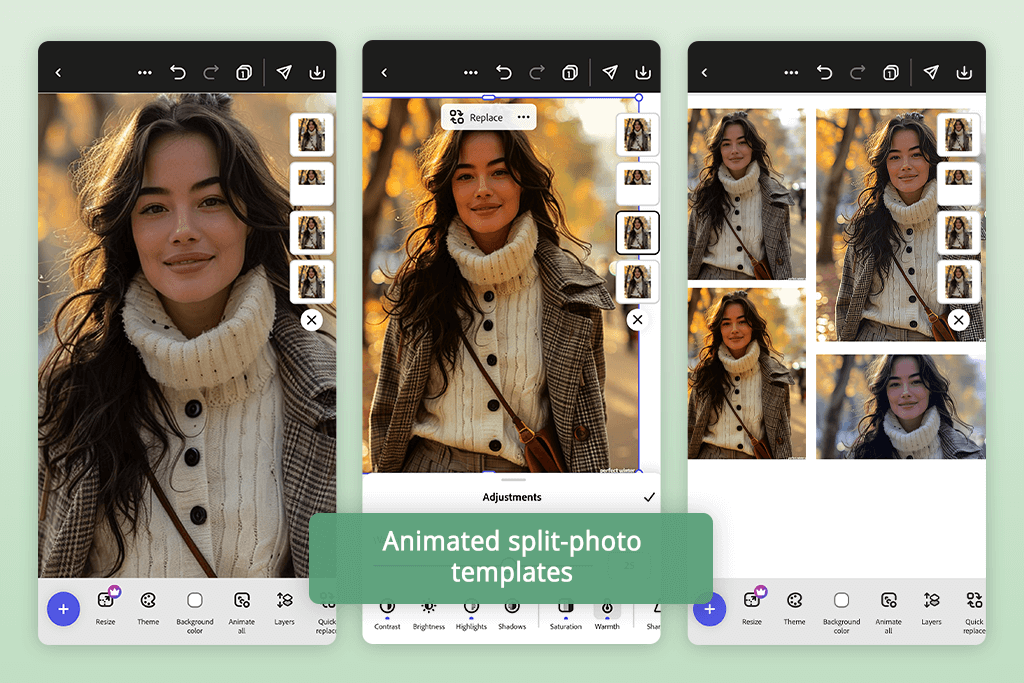
Adobe Express is one of my favorite split screen photo apps. I use it for all kinds of projects - from fast social media posts to high-quality promotional designs. The new update improved layout options, which work great for split-screen projects.
For a product shoot, I used a grid template to place before-and-after edits side by side. The auto-alignment kept everything neat and balanced. I tweaked the border width to define the images better, added minimal text labels, and scheduled the post straight to Instagram - all in one go.
Best for: Clean split-screen collages with built-in templates
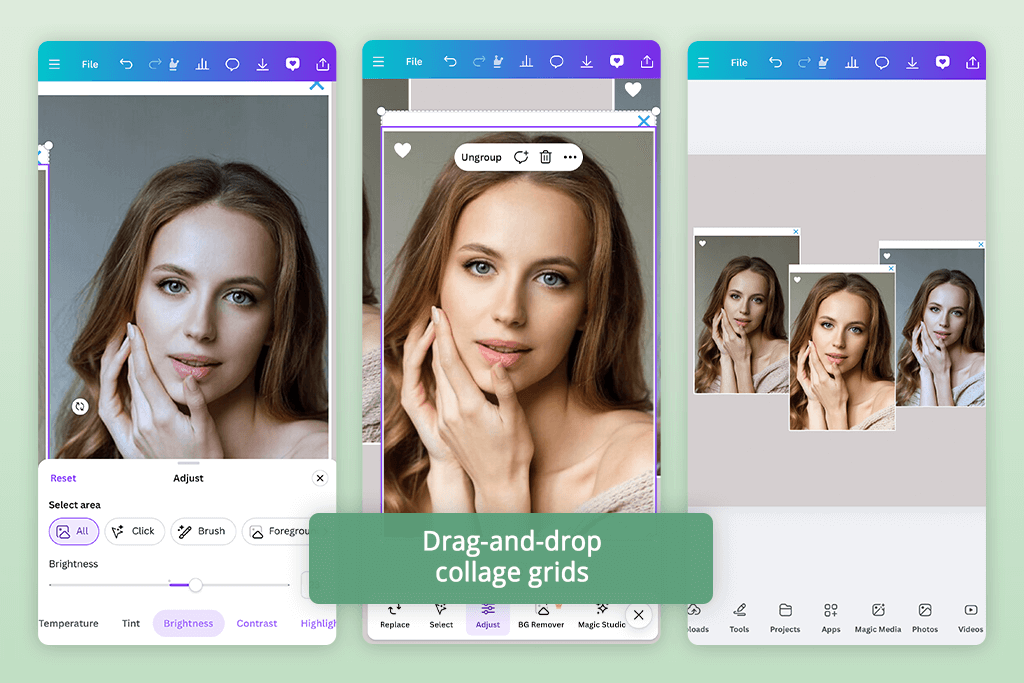
My teammate relies on Canva photo editor for quick design work, because it’s great for creating polished visuals in minutes. Personally, I use it for split-screen graphics whenever clients need instant comparisons or before/after snapshots.
I love using Canva's ready-made grids. Just pick the two-panel layout, add my “before” and “after” photos, and adjust the gaps until it looks clean. For quick projects, I sometimes grab backgrounds from their collection, but since many have watermarks, I usually end up using my own files instead.
Best for: Quick two-photo layouts without extra fuss
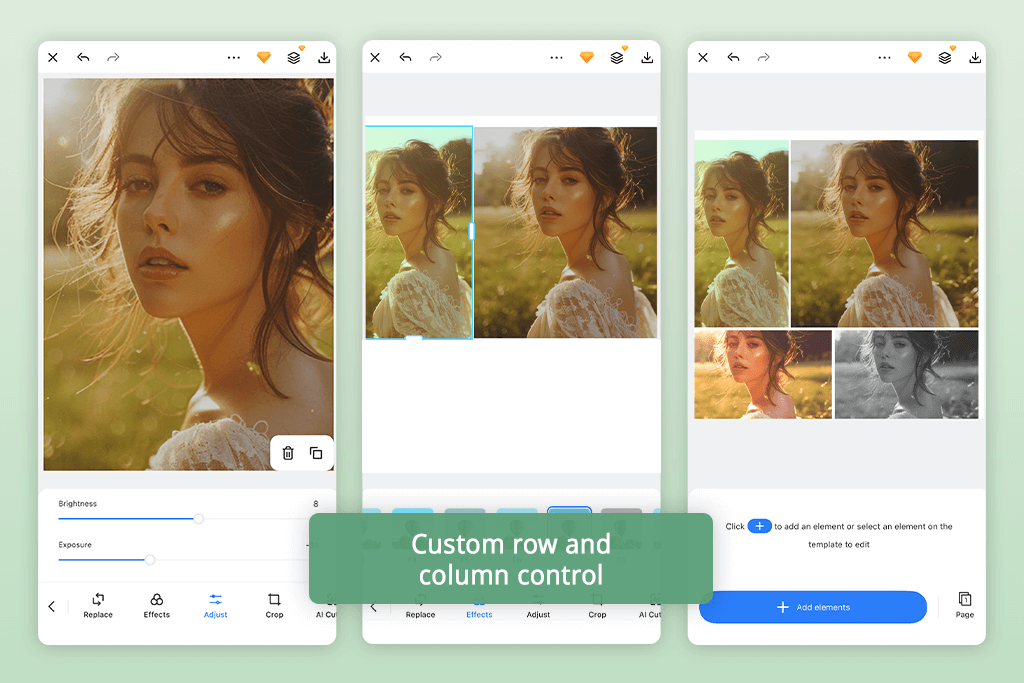
What I really like about Fotor is how flexible the layouts are. Most apps only offer basic grids, but Fotor lets you choose any number of rows and columns. This is perfect when I need to compare several edited versions in one image.
Not long ago, I needed to showcase three retouching styles for a single portrait. I created a 1x3 grid layout using Fotor, manually adjusted the spacing, and even made slight contrast and shadow edits within this free split screen photo app. The only drawback was the frequent ads, which could be disruptive when working under time constraints.
Best for: Fully adjustable photo grids with full control
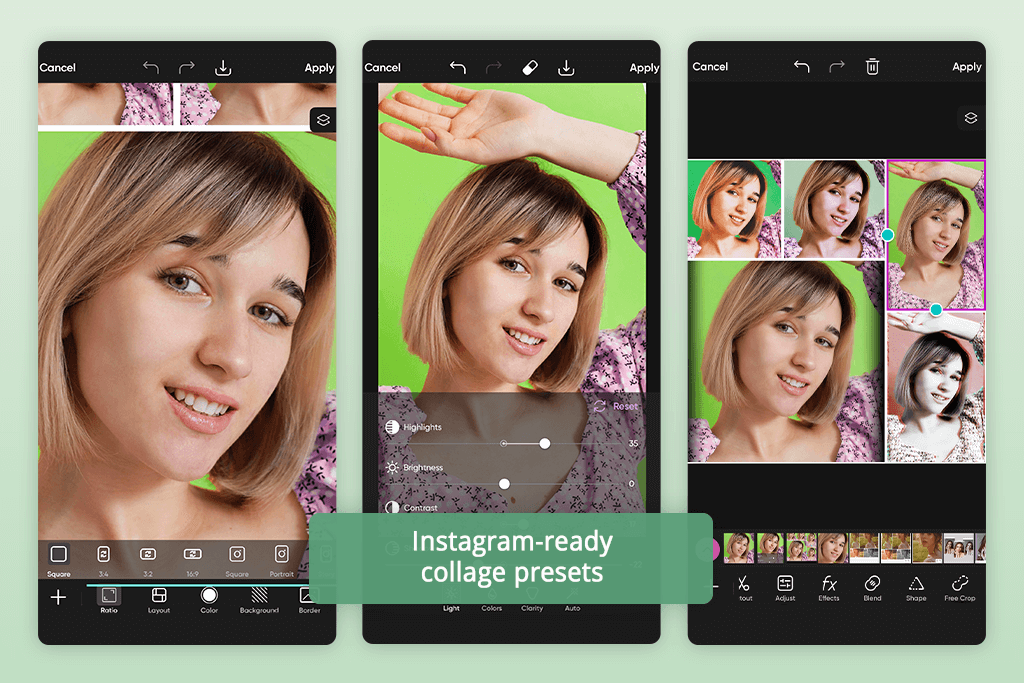
PicsArt ranks among the best split screen apps on the App Store, which made me curious. I don’t normally go for tools that just follow trends, but this option was way more customizable than I expected.
I used one of the pre-made grid layouts to show two retouched versions side by side for an Instagram Story preview. The Instagram photo editor made it easy to switch images, adjust spacing, and even add a filter. It wasn’t the quickest for more complex layered edits, and the watermark on saved images was a little frustrating. But for basic split-screen previews, it works just fine.
Best for: Fast, stylish split-screen edits perfect for social media
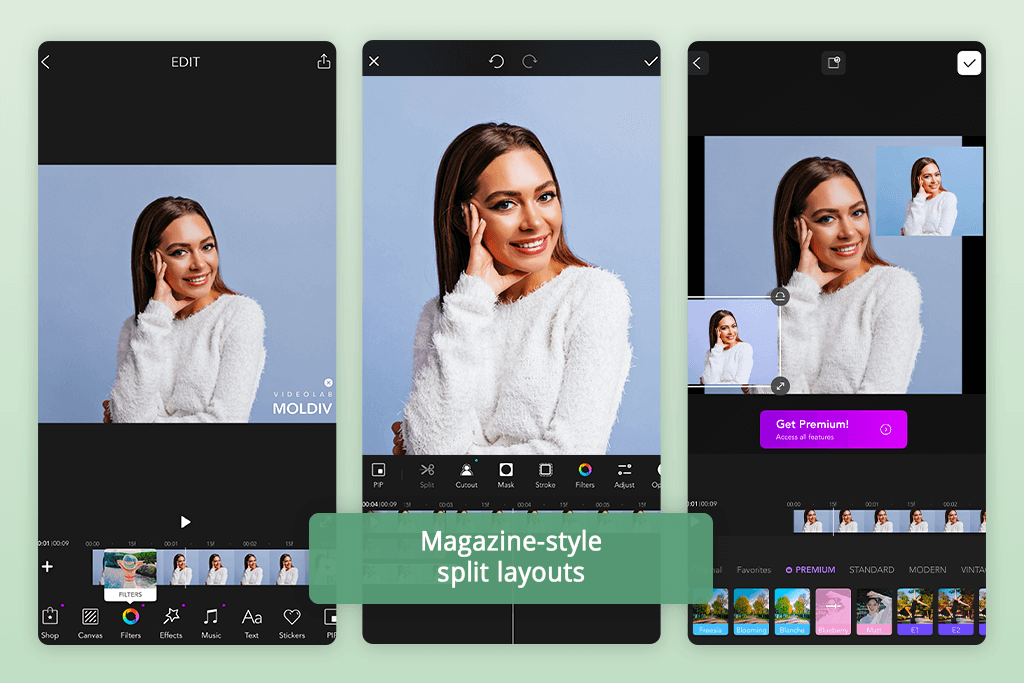
When I told a coworker I needed better split-screen layout options, they suggested MOLDIV. I wasn't familiar with this photo collage app, but after seeing all its frames and magazine-style templates, I got why they recommended it. I ended up using a 3-photo frame to showcase different versions of a beauty retouch.
The adjustable aspect ratio was a game-changer - it let me optimize the layout for Instagram while keeping all the important elements in frame. I played around with adding delicate text labels and even tested some filters to polish the presentation. Be aware: all edits become permanent after exporting your final collage.
Best for: Stylish, magazine-style grids with layout flexibility
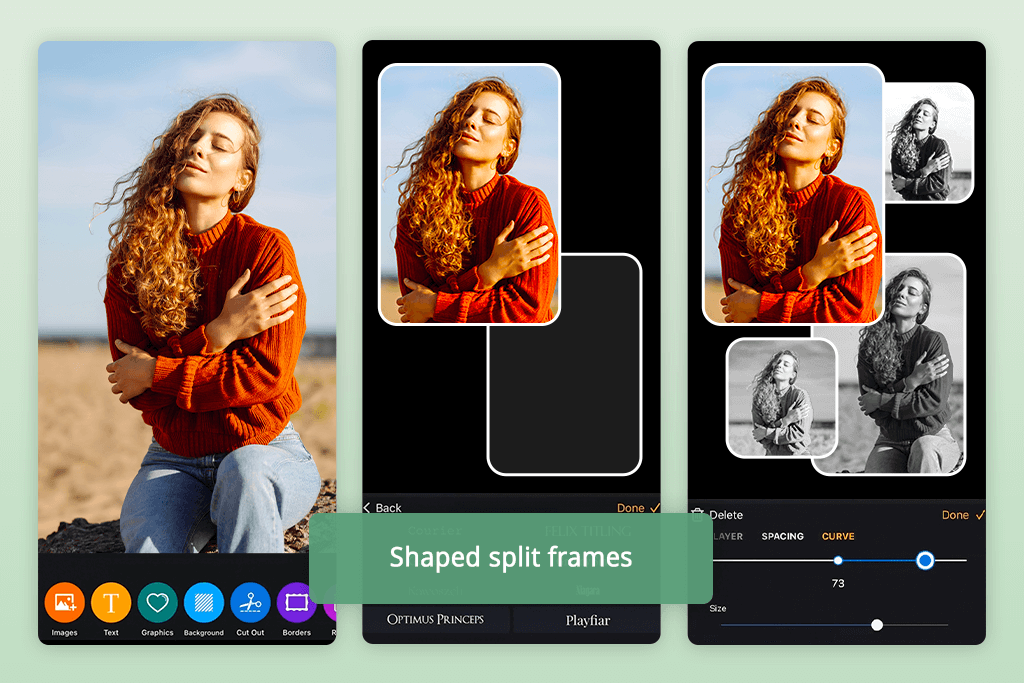
While reading a Reddit discussion about lesser-known photo apps, I discovered the piZap online app. At first glance, it seemed playful, but I wanted to test its split-screen feature. What immediately caught my attention was the variety of layout options: not just typical rectangles but also circles and hearts. This made it ideal for creating a lively lifestyle collage for my product mockup.
I chose a vertical three-image layout, added playful captions using one of their bubble-style fonts, and finished it off with a subtle border to unify the design. While the filter options were a bit basic, the interface worked seamlessly, and exporting the final image was fast.
Best for: Playful split-screen designs with creative shapes
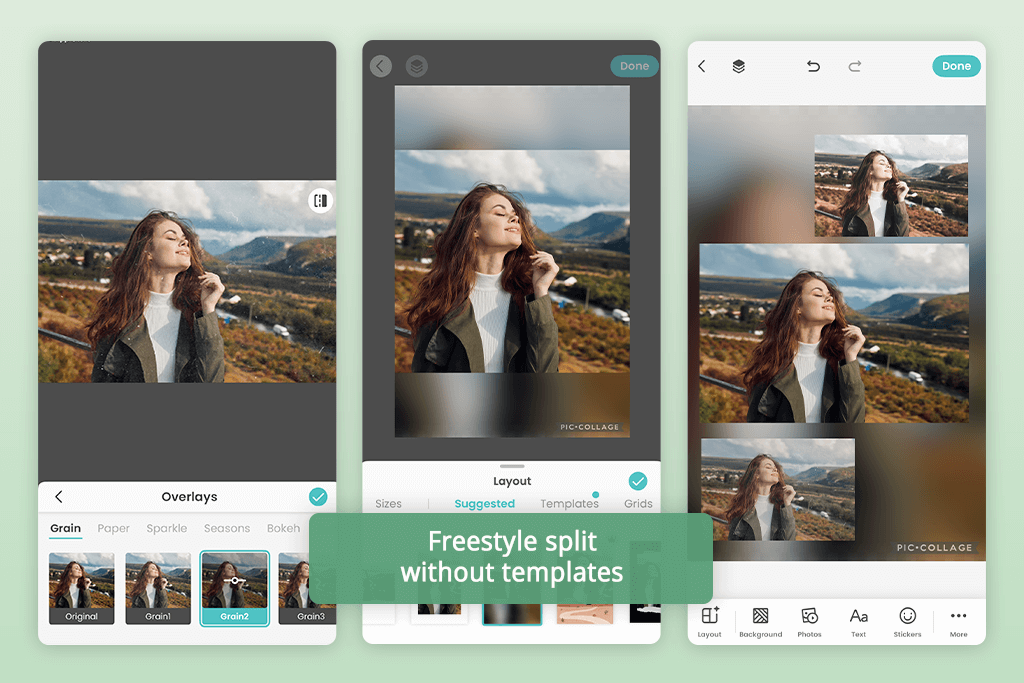
I had previously used PicCollage as a birthday collage app to create a card for my friend, so I was familiar with its fun templates. However, when I tested it for split-screen photo comparisons, I was surprised by how versatile it actually was.
I chose the freestyle mode to create a side-by-side layout myself, which let me place everything exactly where I wanted. I picked a plain background, used the drawing tool to point out small details, and cropped the images directly in the app. While some of the best templates require a VIP subscription, for simple split-screen edits, it worked really well.
Best for: Freeform split layouts with full positioning control
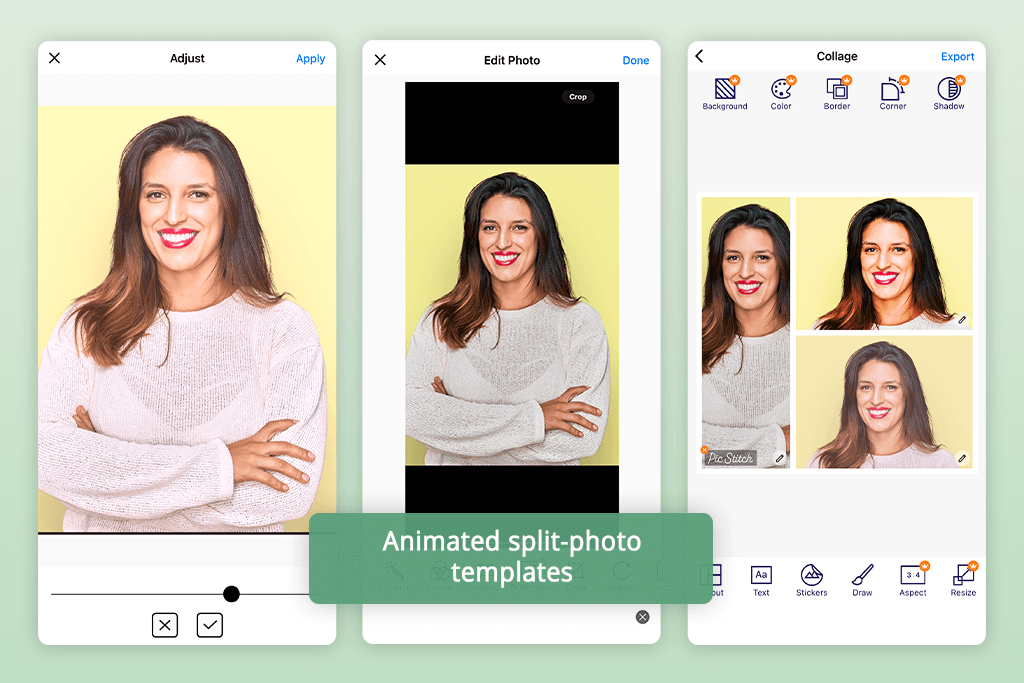
I noticed Pic Stitch online app when I needed a fast yet polished alternative to a basic split screen app. Its 250+ layout choices provided plenty of versatility, making it perfect for creating a neat side-by-side portrait retouching comparison.
I opted for a two-panel horizontal arrangement and adjusted the brightness slightly on one photo using the built-in editing tools. The ability to fine-tune the border width added a professional touch. While there were some intrusive ads and a minor glitch with the export button, neither issue seriously disrupted my workflow.
Best for: Fast side-by-side edits with built-in photo tweaks
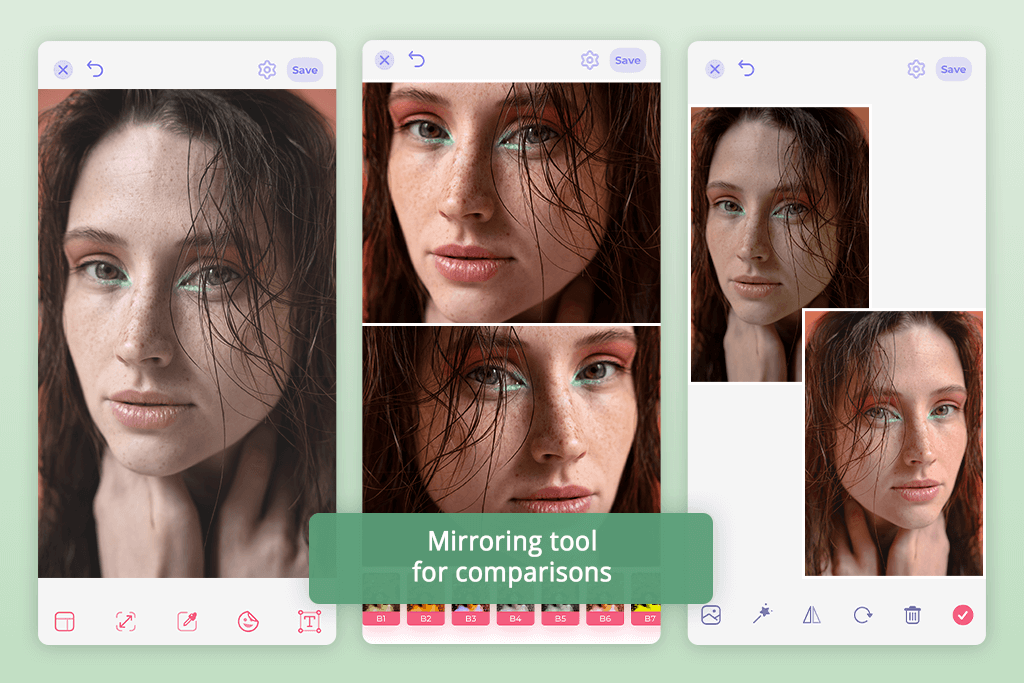
I initially didn’t have high expectations for PicJointer, but it proved to be a reliable option when I needed to quickly put together a before-and-after collage for a client review. The app offered a surprisingly wide range of layouts, and customizing them was refreshingly simple.
I inserted two retouched beauty photos, adjusted the frame sizes, and used the mirroring tool to perfectly align the facial features. The built-in color correction helped even out the tones between the images. However, some advanced tools require a paid upgrade, and I occasionally ran into minor glitches like images failing to load properly.
Best for: Quick before-and-after collages with minimal setup
To test and rate each split screen photo app, we installed and put all of them through real-world scenarios that professional photo retouchers commonly face.
My primary focus was testing their comparison collage capabilities – a feature I frequently use to showcase before-and-after results for clients. Specifically, I examined the ease of inserting images into layouts, customization options for borders and frames, flexibility in adjusting aspect ratios, and the ability to make post-save edits.
We carefully tested how well each app lets you line up photos by hand, work with different file types, and make changes easily. Some apps tried to arrange photos automatically with AI, but the results never looked professional. Having full control to adjust the layout and move images exactly where you want them worked much better for creating clean, high-quality collages.
I created multiple social media posts to test versatility, including a moodboard, a vertical Stories collage, and a side-by-side style comparison. This revealed how well each app handled various formats. Some even offered pre-designed Instagram and Pinterest templates, which proved surprisingly useful.
We judged each app on four key things: how adaptable it was, how simple to use, how accurately it lined up images, and whether it worked well for actual editing jobs. Only the apps that performed well in all these areas made our final recommendations.
Image quality when exporting depends on the app. Free versions often compress files, so always verify your export settings and choose apps that preserve high-resolution output for professional results.
Absolutely. I frequently use this technique when highlighting specific details from one photo – apps like Fotor streamline the process perfectly.
I like using two vertical photos with thin white borders – it works great for Instagram and shows differences clearly.
Not all apps do this - some merge your edits permanently when saving. Always verify first, or pick apps that let you re-edit later.
Customizable spacing and aspect ratios are key. They maintain visual balance when mixing different-sized photos.